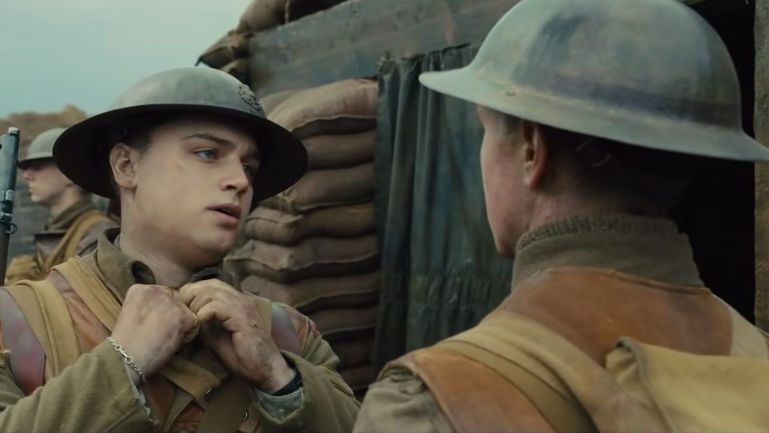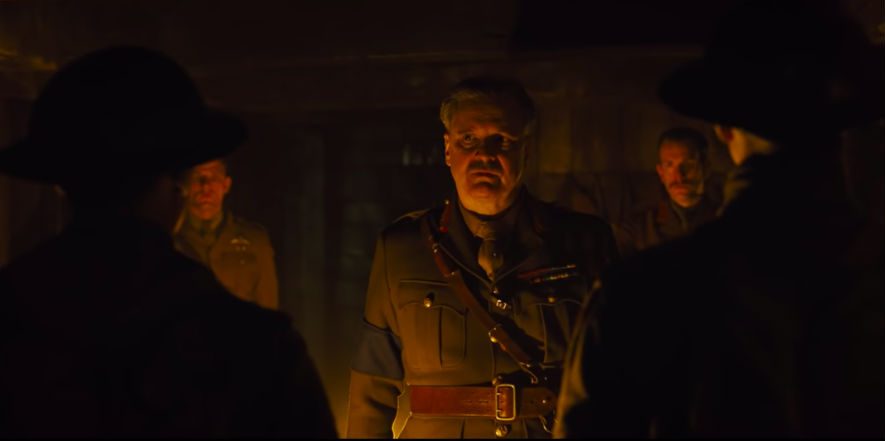SUMMARY
This is AI generated summarization, which may have errors. For context, always refer to the full article.

It is strange that war, one of human civilization’s most artless and destructive preoccupations, borrows a word that by itself conjures images of culture and creation. Theater, which is often associated with plays and performances, is a term in warfare that describes an area where military battles ensue.
Solid attempt
Sam Mendes’ 1917 is a rousing spectacle, in the sense that it transforms a personal anecdote forgotten amidst grander wartime feats into an indelible theatrical experience.
In covering an uphill mission of two young soldiers to deliver a message across desolated fields, razed towns and battlefields to save an entire battalion through one purported single take, it exchanges an expansive scope of the war for an experiential deep dive into the hazards of war. The limitations in time and space prevent the film from enlarging its characters beyond their obvious mettle and the faint traces of personality and morality that are shown through their scattered conversations and actions in the face of danger.
However, instead of those limitations becoming hindrances to the impact of the film, they enlarge its truthfulness, allowing the characters and their struggles to unfold, making their cause universal instead of it hinging on how well the characters were developed through backstories and other artificial means. The downside here is that the film has clearly become more invested in staging one peril after another, favoring spectacle over human drama.
There are breathers here and there, but in a setting that has been populated with risk, these breathers become creatures of coincidence. For example, the idle conversations immediately right after close encounters with possibly very violent deaths seem too much of a stretch. Similarly, some chance encounters feel more staged than organic, more a product of wanting the war film to have humanist touches rather than to realistically depict the blunt emptiness of war.
Visual wonder
1917, despite its fervent attempts to ape reality, is clearly cinema.
The narrative liberalities it takes are there to balance the atrocities of war with semblances of whatever humanity that remains. The feat of containing everything within a single take is both a boon and a bane, as it allows the viewer to fully immerse in the urgency and unpredictability of war but exposes the obvious creative devices that justify the overwhelming depiction of wanton and violence with a universal truth. In any case, the film is breathtaking, with its every movement and turn designed to make the viewing experience as captivating as possible.
While Mendes architects the illusion, and along the way, misses out on making everything as believable as possible, it is cinematographer Roger Deakins that spotlessly delivers on the promise of extracting awe, fright and majesty from death and destruction. The film is a visual wonder. It seamlessly shifts from banal footage of soldiers talking while walking along trenches to framing a ruined town being beautifully illuminated by flames, flares, and explosions. The score is a tad overwhelming at times, but it is never distracting.

Pains and aches of war
1917 takes the theater back from war.
It is a brilliant appropriation of the pains and aches of war for the purpose of creating something that is pure cinema. – Rappler.com

Francis Joseph Cruz litigates for a living and writes about cinema for fun. The first Filipino movie he saw in the theaters was Carlo J. Caparas’ Tirad Pass.
Since then, he’s been on a mission to find better memories with Philippine cinema.
Add a comment
How does this make you feel?
There are no comments yet. Add your comment to start the conversation.